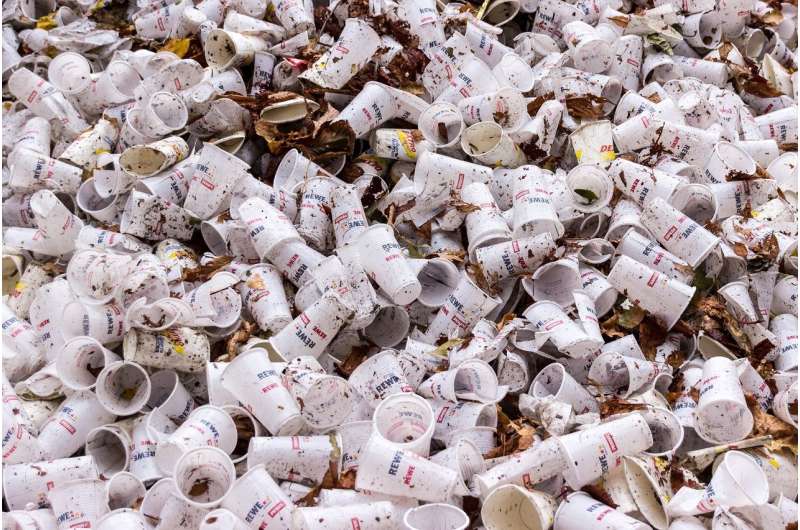November 28, 2018 report
Example of microplastic pollutants disrupting predator-prey relationship found

A team of researchers with the French National Centre for Scientific Research has found an example of environmental microplastics disrupting a predator-prey relationship. In their paper published in the journal Biology Letters, the group describes their study of the impact of microplastic consumption on the common periwinkle and what they found.
The researchers note that to date, many studies have been done to better understand what happens to living creatures when they consume microplastics—but little work has been done to better understand what happens to the relationship between predators and prey when microplastics are introduced into the environment.
Periwinkles are a kind of shellfish, or more precisely, a sea snail. They spend their time perched on algae-covered rocks grazing on the algae. They are considered a keystone creature because of the role they play as prey for other creatures, mainly crabs. Periwinkles are also consumed by humans. In this new effort, the researchers wondered what might happen to periwinkles that consume algae that has itself absorbed microplastics. Prior research has shown that when algae absorb microplastics, they also absorb hazardous chemicals and metals. This is because microplastics absorb such materials from the water. When a periwinkle eats the algae, it is also eating the hazardous materials present in the algae.
To find out if the heavy metals or other toxic substances eaten by the periwinkle cause disruptive changes, the researchers gathered some specimens and brought them into the lab for testing. They also collected crabs to use as predators.
The researchers report that when a periwinkle that had consumed the toxic materials, it did not react in an expected way to the presence of a predator. Normally, upon spying a crab, a periwinkle will pull into its shell or try to hide to avoid capture. The periwinkles exposed to the toxic materials did not attempt to avoid capture, which suggested they had nerve damage of some sort, likely due to consumption of heavy metals.
The researchers note that in their experiments, the levels of toxicity in the microplastics were equivalent to those on a typical beach, thus representing real-world conditions. The researchers suggest their findings hint at major changes happening in the marine environment due to the microplastics introduced by us humans.
More information: Microplastic leachates impair behavioural vigilance and predator avoidance in a temperate intertidal gastropod, Biology Letters (2018). rsbl.royalsocietypublishing.or … .1098/rsbl.2018.0453
Journal information: Biology Letters
© 2018 Science X Network
















